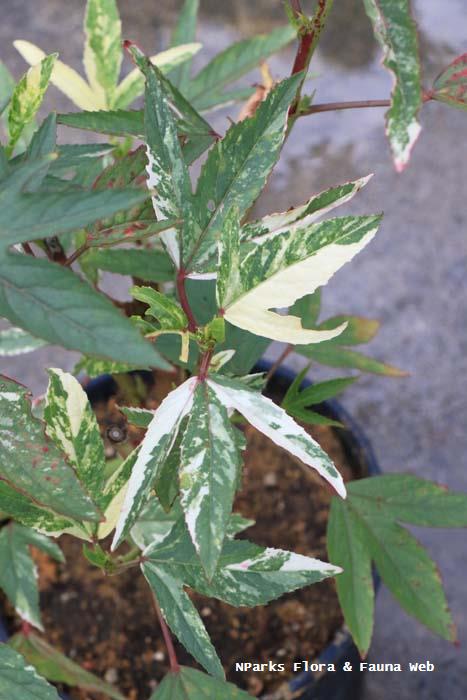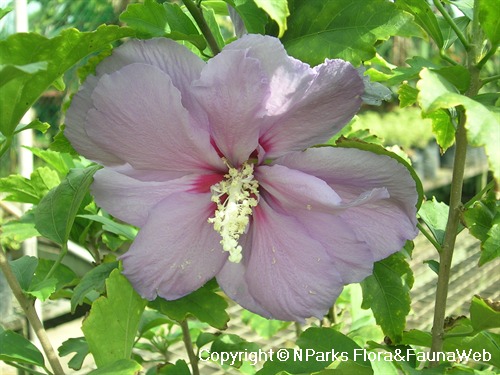
Back
Hibiscus schizopetalus
| Family Name: | Malvaceae |
| Common Name: | Coral Hibiscus, Shoe-flower, Bunga Sepatu, Japanese Hibiscus, Japanese Lantern, Fringed Hibiscus, Bunga Raya |
Name
Classifications and Characteristics
| Plant Division | Angiosperms (Flowering Seed Plants) |
|---|---|
| Plant Growth Form | Shrub |
| Lifespan (in Singapore) | Perennial |
Biogeography
| Native Distribution | Tropical eastern Africa (Kenya, Tanzania, northern Mozambique) |
|---|---|
| Native Habitat | Terrestrial |
| Preferred Climate Zone | Tropical |
| Local Conservation Status | Non-native |
Description and Ethnobotany
| Growth Form | Narrow and erect woody shrub, able to grow up to 1 - 2 m tall. |
|---|---|
| Foliage | Dark green leaves, ovate in shape, serrate margins, measuring up to 12 cm long. |
| Flowers | Lantern-like pink to red flowers, petals are recurved, flower has a long slender pendent staminal column. |
| Fruit | Fruit is a cylindrical capsule. |
| Etymology | Genus Hibiscus is from the Greek word hibiskos which Roman poet Virgil used to relate to the marsh mallow plant. Species schizopetalus means with deeply cut petals and it refers to the recurved and divided petals of the flower. |
Landscaping Features
| Desirable Plant Features | Ornamental Flowers |
|---|---|
| Landscape Uses | Parks & Gardens, Small Gardens |
Fauna, Pollination and Dispersal
| Fauna Pollination Dispersal Associated Fauna | Butterfly-Attracting |
|---|
Plant Care and Propagation
| Light Preference | Full Sun |
|---|---|
| Water Preference | Moderate Water |
| Plant Growth Rate | Moderate |
| Rootzone Tolerance | Moist Soils, Well-Drained Soils |
Foliar
| Mature Foliage Colour(s) | Green |
|---|---|
| Leaf Area Index (LAI) for Green Plot Ratio | 4.5 (Shrub & Groundcover - Dicot) |
Floral (Angiosperm)
| Flower Colour(s) | Red, Pink |
|---|
Image Repository
Others
| Master ID | 802 |
|---|---|
| Species ID | 2097 |
| Flora Disclaimer | The information in this website has been compiled from reliable sources, such as reference works on medicinal plants. It is not a substitute for medical advice or treatment and NParks does not purport to provide any medical advice. Readers should always consult his/her physician before using or consuming a plant for medicinal purposes. |






